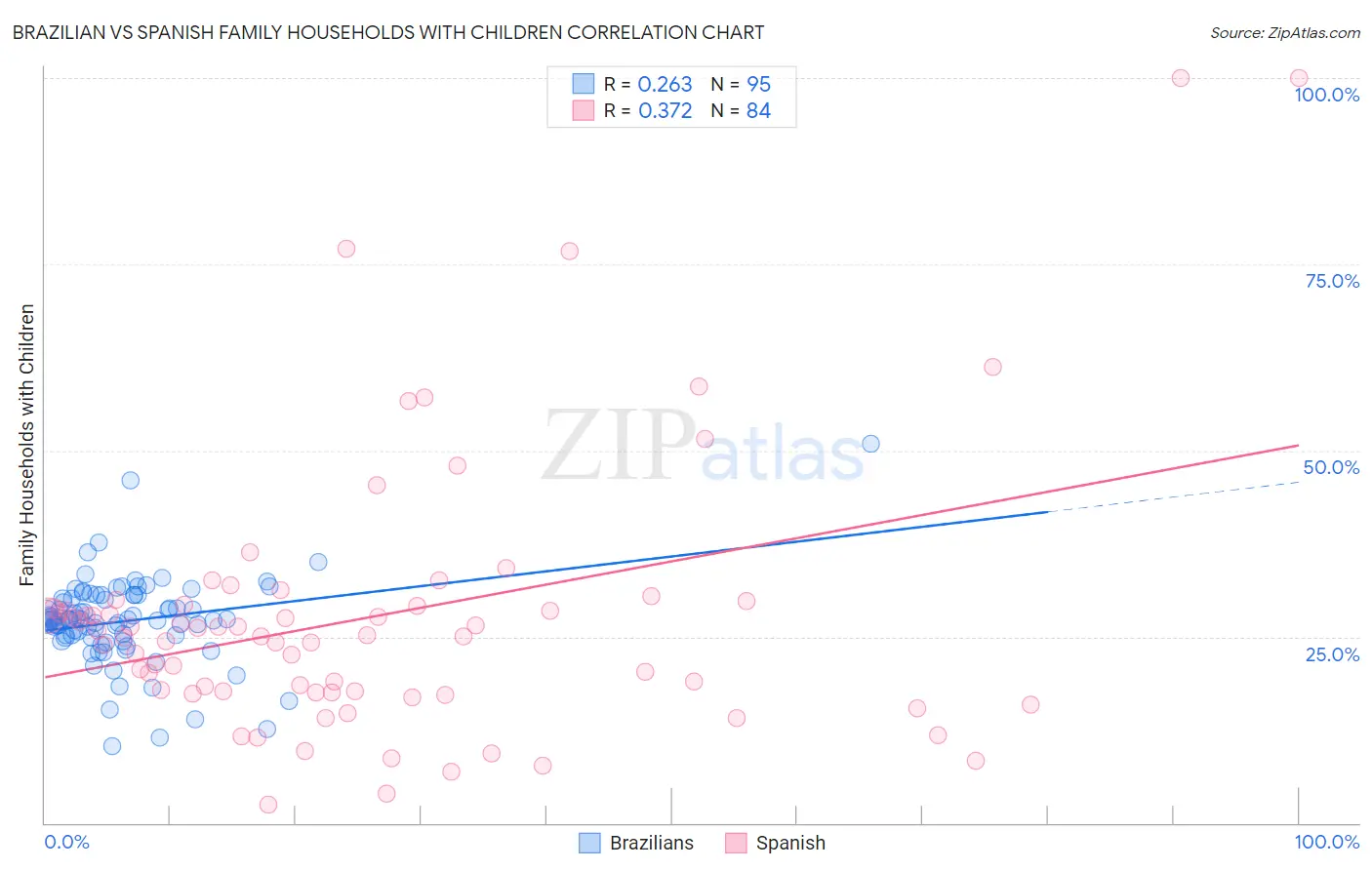Brazilian vs Spanish Family Households with Children
COMPARE
Brazilian
Spanish
Family Households with Children
Family Households with Children Comparison
Brazilians
Spanish
27.7%
FAMILY HOUSEHOLDS WITH CHILDREN
79.6/ 100
METRIC RATING
144th/ 347
METRIC RANK
27.7%
FAMILY HOUSEHOLDS WITH CHILDREN
81.8/ 100
METRIC RATING
140th/ 347
METRIC RANK
Brazilian vs Spanish Family Households with Children Correlation Chart
The statistical analysis conducted on geographies consisting of 323,614,103 people shows a weak positive correlation between the proportion of Brazilians and percentage of family households with children in the United States with a correlation coefficient (R) of 0.263 and weighted average of 27.7%. Similarly, the statistical analysis conducted on geographies consisting of 421,743,519 people shows a mild positive correlation between the proportion of Spanish and percentage of family households with children in the United States with a correlation coefficient (R) of 0.372 and weighted average of 27.7%, a difference of 0.080%.

Family Households with Children Correlation Summary
| Measurement | Brazilian | Spanish |
| Minimum | 10.3% | 2.5% |
| Maximum | 50.9% | 100.0% |
| Range | 40.6% | 97.5% |
| Mean | 27.1% | 27.7% |
| Median | 27.3% | 25.1% |
| Interquartile 25% (IQ1) | 24.9% | 17.6% |
| Interquartile 75% (IQ3) | 30.6% | 29.2% |
| Interquartile Range (IQR) | 5.7% | 11.6% |
| Standard Deviation (Sample) | 5.9% | 18.1% |
| Standard Deviation (Population) | 5.9% | 18.0% |
Demographics Similar to Brazilians and Spanish by Family Households with Children
In terms of family households with children, the demographic groups most similar to Brazilians are Immigrants from Chile (27.7%, a difference of 0.010%), Basque (27.7%, a difference of 0.010%), Immigrants from Eastern Africa (27.7%, a difference of 0.020%), Immigrants from Moldova (27.6%, a difference of 0.020%), and Osage (27.6%, a difference of 0.020%). Similarly, the demographic groups most similar to Spanish are Immigrants from Eastern Asia (27.7%, a difference of 0.0%), Swiss (27.7%, a difference of 0.020%), Vietnamese (27.7%, a difference of 0.030%), Uruguayan (27.7%, a difference of 0.050%), and Immigrants from Eastern Africa (27.7%, a difference of 0.060%).
| Demographics | Rating | Rank | Family Households with Children |
| Immigrants | Belize | 85.7 /100 | #132 | Excellent 27.7% |
| Iranians | 85.2 /100 | #133 | Excellent 27.7% |
| Immigrants | Panama | 84.9 /100 | #134 | Excellent 27.7% |
| Immigrants | Ecuador | 84.6 /100 | #135 | Excellent 27.7% |
| Immigrants | Portugal | 84.1 /100 | #136 | Excellent 27.7% |
| Immigrants | Dominican Republic | 83.9 /100 | #137 | Excellent 27.7% |
| Uruguayans | 83.2 /100 | #138 | Excellent 27.7% |
| Vietnamese | 82.6 /100 | #139 | Excellent 27.7% |
| Spanish | 81.8 /100 | #140 | Excellent 27.7% |
| Immigrants | Eastern Asia | 81.7 /100 | #141 | Excellent 27.7% |
| Swiss | 81.4 /100 | #142 | Excellent 27.7% |
| Immigrants | Eastern Africa | 80.2 /100 | #143 | Excellent 27.7% |
| Brazilians | 79.6 /100 | #144 | Good 27.7% |
| Immigrants | Chile | 79.5 /100 | #145 | Good 27.7% |
| Basques | 79.5 /100 | #146 | Good 27.7% |
| Immigrants | Moldova | 79.1 /100 | #147 | Good 27.6% |
| Osage | 79.0 /100 | #148 | Good 27.6% |
| Menominee | 78.9 /100 | #149 | Good 27.6% |
| Argentineans | 78.5 /100 | #150 | Good 27.6% |
| Portuguese | 77.8 /100 | #151 | Good 27.6% |
| Ethiopians | 77.0 /100 | #152 | Good 27.6% |